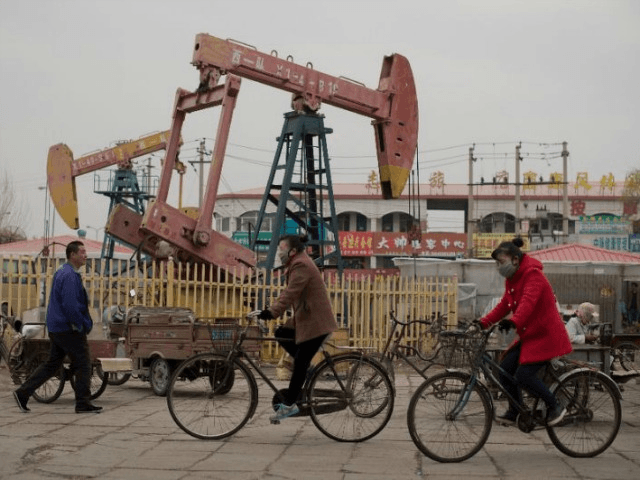The global oil price collapse is a historic “opportunity” to “bottom out” Chinese energy assets and increase reserves, the communist country’s state media reported on Tuesday.
The Global Times article was published after news on Monday that China – the world’s top importer of crude oil – nearly doubled crude oil storage inflows in the first quarter of this year, compared to 2019. The coronavirus pandemic decreased oil demand, and there was news on Tuesday that China has granted additional oil import quotas for private refineries, Reuters reported.
United States oil-future prices went negative on Monday for the first time in history, as oil demand plummeted amid disruption in global supply and demand chains caused by the Chinese coronavirus pandemic. Government-mandated lockdowns meant to curb the spread of the Chinese coronavirus have forced the effective shutdown of economies around the world.
“Analysts say the historic drop in oil prices offers China, a major source of oil imports, a good opportunity to ‘bottom out’ certain oil assets and scale up strategic reserves,” Global Times, a Chinese Communist Party (CCP) propaganda newspaper, said on Tuesday.
Instead of reducing imports, China responded to the drop in oil demand by increasing crude storage flows. The country nearly doubled the rate at which it put oil into storage in the first quarter of 2020, compared to last year, Reuters calculated.
Although the CCP does not release official data on flows into strategic and commercial stockpiles, Reuters estimated a figure by subtracting the amount of crude processed by refineries from the total volume of oil available from both imports and domestic output.
According to customs data, China’s crude oil imports were 10.2 million barrels per day (bpd) in the first three months of 2020.
Domestic output was 3.74 million bpd, allowing for 13.94 million bpd in available crude for the first quarter of this year.
Refinery output for the first quarter was the equivalent of 11.96 million bpd, which means that 1.98 million bpd of the total available crude was not processed by refineries.
The same calculations for the first quarter of 2019 show imports of 9.83 million bpd, domestic production of 3.84 million bpd, and refinery processing of 12.6 million bpd, allowing for 1.07 million bpd in available crude.
Thus, China practically doubled the rate at which it puts oil into storage in the first quarter of 2020.
For perspective, Reuters points out that China’s storage flows, at about 2 million bpd, are 25 percent higher than the total crude consumption of the United Kingdom, the world’s sixth-largest economy.
China is on track to import at least 9.35 million bpd of seaborne crude oil in April, up from 8.8 million bpd in March, according to Refinitiv vessel-tracking data, Reuters reports. Seaborne imports exclude pipeline volumes from Russia and central Asia, which were around 843,000 bpd in March.
In the coming days, China will issue more crude oil import quotas to nonstate refiners in its second batch of allowances for 2020, several sources at five independent refineries told Reuters on Tuesday.
China’s Ministry of Commerce plans to issue quotas totaling 393.32 million barrels “within a few days” the sources said, after viewing documents outlining the allocations.

COMMENTS
Please let us know if you're having issues with commenting.